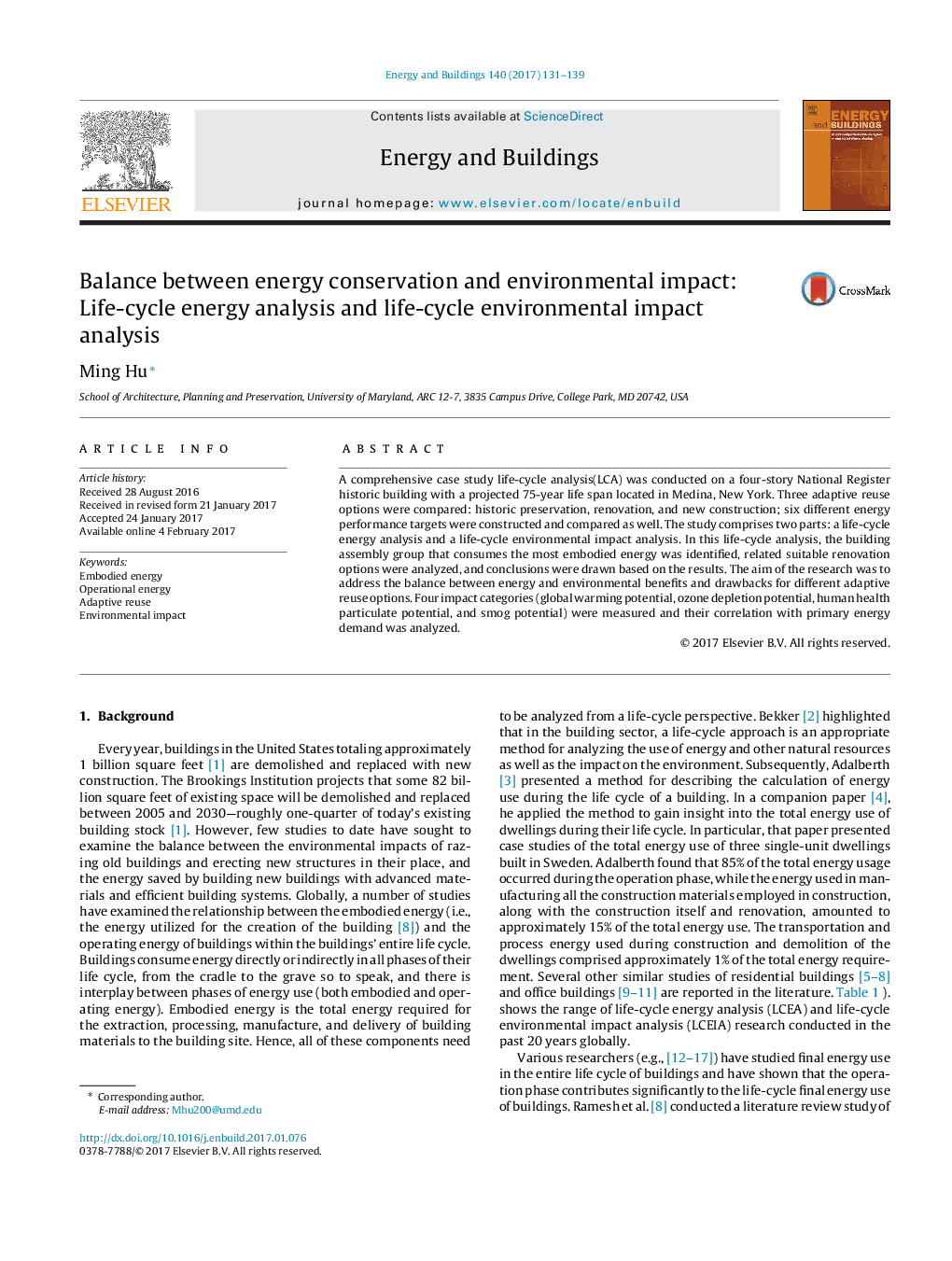| Article ID | Journal | Published Year | Pages | File Type |
|---|---|---|---|---|
| 4919261 | Energy and Buildings | 2017 | 9 Pages |
Abstract
A comprehensive case study life-cycle analysis(LCA) was conducted on a four-story National Register historic building with a projected 75-year life span located in Medina, New York. Three adaptive reuse options were compared: historic preservation, renovation, and new construction; six different energy performance targets were constructed and compared as well. The study comprises two parts: a life-cycle energy analysis and a life-cycle environmental impact analysis. In this life-cycle analysis, the building assembly group that consumes the most embodied energy was identified, related suitable renovation options were analyzed, and conclusions were drawn based on the results. The aim of the research was to address the balance between energy and environmental benefits and drawbacks for different adaptive reuse options. Four impact categories (global warming potential, ozone depletion potential, human health particulate potential, and smog potential) were measured and their correlation with primary energy demand was analyzed.
Related Topics
Physical Sciences and Engineering
Energy
Renewable Energy, Sustainability and the Environment
Authors
Ming Hu,
